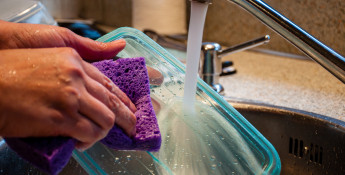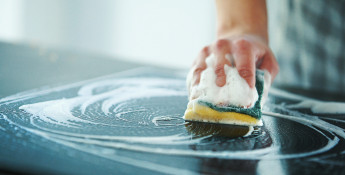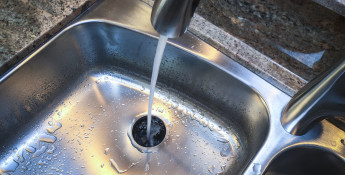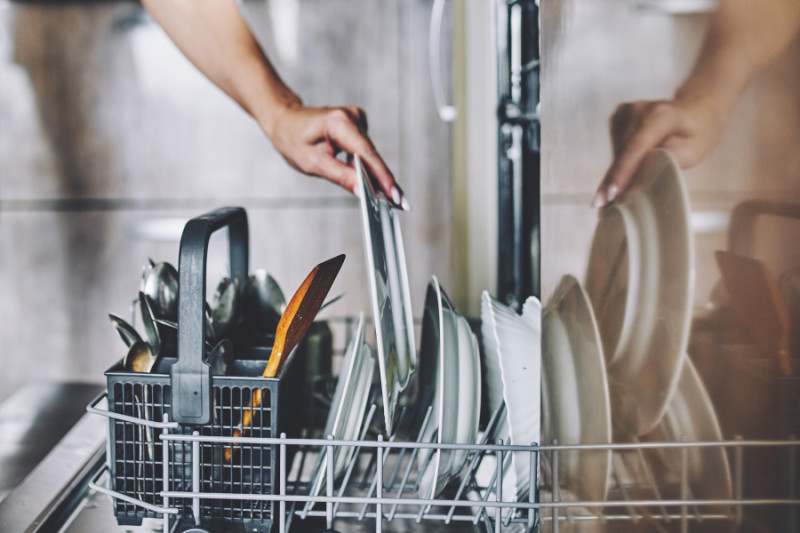By Chef Alli on April 5, 2024
11 Helpful Tips for Correctly Loading a Dishwasher
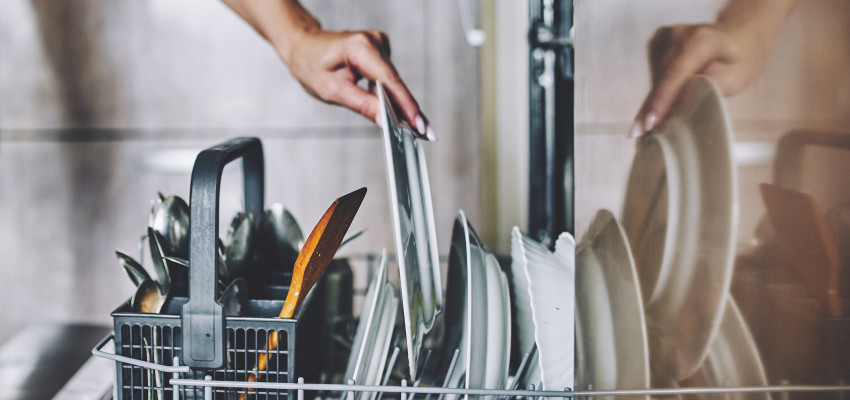
Does it seem lately that your dishes aren’t quite as squeaky clean as they should be, even after an extended wash cycle?
Or does that load of dishes you’ve just placed into the racks appear completely disarrayed, almost like some sort of weird hodgepodge?
These dishwasher tips and tricks are sure to help you take better advantage of the technology and power dishwashers offer.
1. Skip the pre-rinse
Before modern dishwashers became so efficient, it was necessary to give dishes a good rinse before loading them into the racks. Not anymore! Unless your dishwasher is quite antiquated, you can stop wasting water (and time) by pre-washing your dishes.
This can be a difficult habit to break if you’ve always pre-rinsed or feel highly doubtful that a new dishwasher can truly handle unrinsed dishes as it claims.
I resisted the urge to rinse several loads of dirty dishes in my recently delivered dishwasher and wow! The new dishwashers deliver; the dirtiest of dishes all came out sparkling clean with each load I tested.
2. Mix up your silverware
To prevent a safety hazard, always load knives blade down and handle up. This helps prevent injuries, especially if you have children in the house.
Load spoons and forks with the handles up for maximum cleaning. This can help prevent the spread of germs and bacteria when the dishwasher is unloaded since you are touching the handles and not the clean prongs or spoon beds with your fingers.
*Note: Kitchen knives and cutlery should always be hand washed, never run through the dishwasher. The high pressure of the water on the blade can ruin the sharp, straight edge and finish.
3. Face plates inward
Because dishwashers are equipped with sprayer arms that radiate from the center bottom, it’s best to load plates facing inward to harness optimum cleaning power.
When plates are placed outward, the water jets from the center may not be able to reach the front of the plates closest to the machine walls.
4. Delicate items go on the top rack
Fragile items such as special drinking glasses, melamine bowls and plates and plastic storage containers should be placed within the top rack since it is further away from the hot water jets on the bottom of the machine.
Because the top rack has less water pressure and a lower water temperature, these items are much less likely to move around and break or melt.
It’s also a good idea to do the top rack “jiggle test” once you’ve loaded it. If you gently shake the top rack and the items within rattle around, you may want to rearrange these dishes to make them more secure.
5. Don’t block the sprayer and water jets
If you happen to place something over the center sprayer or water jets, such as a large mixing bowl or soup pot, for instance, this can prevent proper waterpower distribution throughout the machine.
6. Load from back to front and bottom to top
Don’t be tempted to tuck items along the front of the empty racks just because that area is always within the easiest reach.
Instead, fully open the door and pull the racks all the way out, loading your dishes starting at the back, moving forward. This prevents loading problems later as the racks fill up since you can more easily see the open area in the front, making them fit better.
Always load the largest items into the bottom rack first, working your way toward the top.
Most dishwashers are designed for plates and larger items to fit best in the bottom rack, while glasses and bowls fit better on the top rack.
7. Make sure items aren’t protruding
Be sure there are no larger items or serving utensils sticking out toward the front.
If an item is protruding where it shouldn’t be and goes unnoticed, it’s easy to damage the interior of the dishwasher door as you close it.
It’s also never a good idea to shove the racks back into the dishwasher by closing the door. This can cause them to roll too quickly into the dishwasher, breaking fragile glass items when the racks hit the back wall.
8. Keep a small mesh laundry bag handy
When you’ve got small, lightweight items that you want to run through a dishwashing cycle, it’s a good idea to keep them contained in a mesh laundry bag.
The bag prevents these small items from winding up on the bottom of your dishwasher where they can be damaged.
9. Resist the urge, don’t overload
If you need to batch-wash dishes in your dishwasher to keep from overloading, do it!
On those occasions when there are excess dishes to wash, such as special luncheons and dinner parties, nothing says not to run a couple of loads back-to-back.
Overloading often keeps the water flow inside the dishwasher too restricted, preventing dishes in specific areas from coming out as clean.
10. Use the correct amount of detergent
Most of us use too much detergent with each dishwashing cycle. This causes damage to the finish of our dishes.
The correct amount of detergent to be used depends on the brand and type of dishwasher, how dirty the dishes are and the hardness of your water.
Most manufacturers recommend using between 2 teaspoons to 3 tablespoons of dishwashing detergent. Consult your dishwasher manual for the recommended amount for your model.
11. Not everything is cut out for the dishwasher
There are certain items that should not washed in the dishwasher. These items include cutlery (as mentioned above), wooden utensils and cutting boards, nonstick skillets and saucepans, as well as aluminum and metal baking sheets.
The powerful water jets and hot temperatures can ruin the finish on these items within just a few cycles. Instead, wash these items by hand.
You Might Also Enjoy

